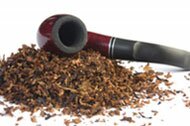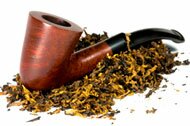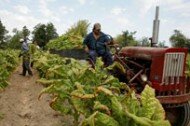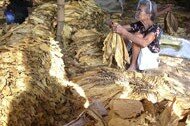Smoking plummeted from 1965 to 2007 among the heaviest users in the United States, especially in California, according to a new study led by veteran UC San Diego smoking researcher John Pierce. The drop in “high-intensity” smoking Dunhill, defined as 20 (one pack) or more cigarettes a day, helps explain declines in lung-cancer deaths, according to the study, published Wednesday in the Journal of the American Medical Association.
“Lung-cancer risk is related to both the duration of smoking and intensity of consumption,” said the study.
However, Pierce said, the state’s tobacco control program is in trouble. Because the program is funded through tobacco taxes and smoking is down, less money is coming into the program. And that means California’s spectacular results in reducing smoking and lung cancer could be imperiled.
In the United States, excluding California, the percentage of high-intensity smokers dropped from 22.9 percent to 7.2 percent during the 1965-2007 study period. In California, the percentage of high-intensity smokers fell from 23.2 percent to 2.6 percent during that period.
“The pack-a-day smokers are disappearing in California,” Pierce said.
California had a lung cancer rate of 77.1 per 100,000 people in 2007, compared with a rate of 101.7 per 100,000 in the rest of the United States. To put it another way, California had a 24 percent lower lung cancer rate than the rest of the nation.
Changes in “social norms” encouraged by the state’s anti-smoking program spurred the reduction, Pierce said. “There’s a California effect, across both initiation (of smoking) and cessation,” he said. “The initiation rates are one-third to one-half the level in the rest of the country.”
In other words, Californians increasingly tend never to start smoking, and those who do increasingly tend to quit. California’s anti-smoking program, financed by cigarette taxes, has been especially vigorous, the study noted. But California has fallen behind much of the country in its cigarette tax rate, which used to be among the highest in the nation, Pierce said.
“It’s not bringing in the money, and it hasn’t got the price disincentive to stop smoking,” he said. “Its price is now lower than the average across all the country.”
The state has not raised its cigarette tax of 87 cents a pack since 1999, according to the California Department of Public Health. A 2017 report from the American Lung Association gave the state a D grade for its cigarette tax rate and an F for its tobacco control spending. Pierce said the program suffered from the failure of an initiative on the November 2006 ballot that would have hiked cigarette taxes by $2.60 a pack.
“It was too much for people,” Pierce said of the tax. “Even the tobacco-control people said it was too big of a hike. If they had done just $1 or $1.50, it would have been in line with what was happening in the rest of the country.”
The study was funded by the University of California Tobacco-Related Disease Research Program and by the Moores UCSD Cancer Center through a donation from Carol Vassiliadis and family.

 RSS Feed
RSS Feed Twitter
Twitter

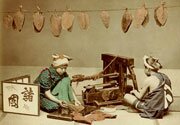

 Posted in
Posted in  Tags: smoking dunhill,
Tags: smoking dunhill, 
